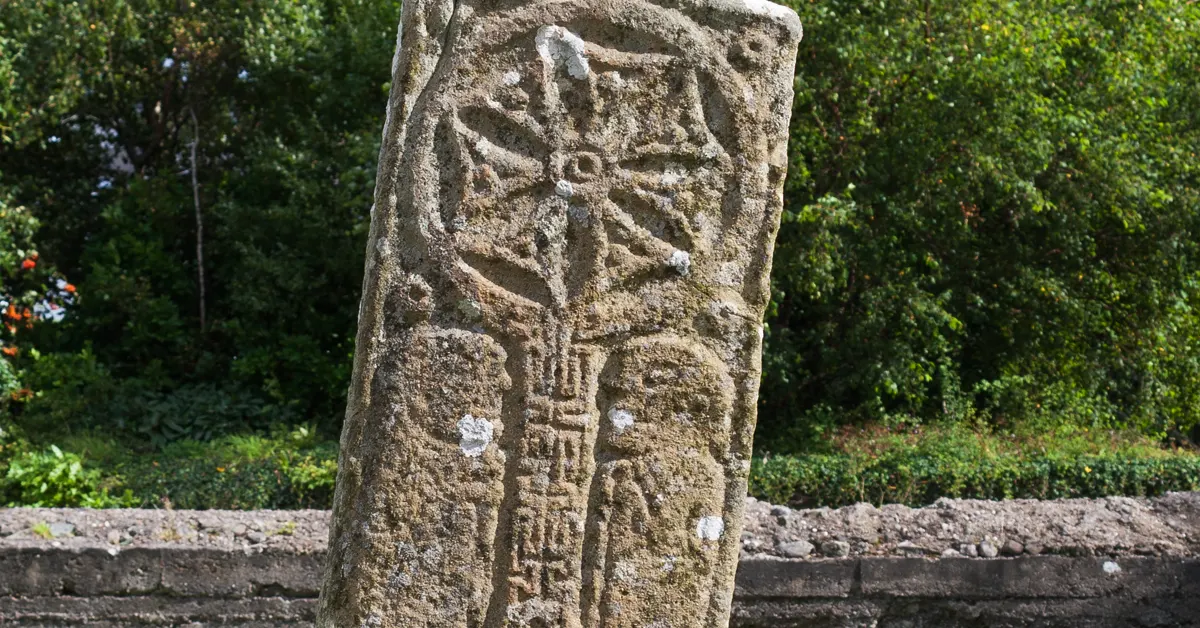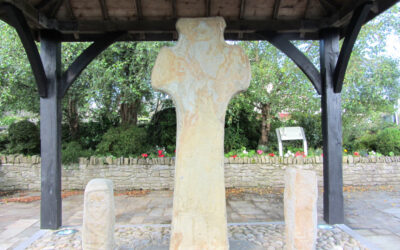
The Marigold Stone
The Marigold slab at Carndonagh stands near the edge of a terrace on the south-east side of the present church on the site. (Church of Ireland).
Description
It is 1.68m tall, parallel sides, is elegantly carved on all four sides, and is 42.9cm wide at the top. On the west face a pair of figures stand on either side of a flabellum, the head of which is a seven petalled marigold in a circle. At the centre of the marigold is a double circle in relief; there is a small boss in each of the webbed spaces between the petal. The handle is shown with a stepped design, ending in a pair of great loops at the bottom.
These loops straddle a peltoid extension of a circle below, which stands on a horizontal foot with a stepped design like that of the handle of the flabellum. Threaded through the circumference of the circle is a regular four-looped interlace resembling a marigold.
The figure carving
The figure on each side is shown in knee-length robes, with hair dressed back over the ears to fall over the nape of the neck. That on the right holds in the hand nearest the viewer, raised in front of his chest, a crooked crozier. The figure on the left holds in a similar position what may be a tau crozier with a vertical slot carved above the pointed foot.
The main design element
The Marigold stone takes its name from the well preserved design which dominates the west face of this cross slab. The design, framed by a circle, can be viewed as a floral motif with seven petals – in which case it is closer to the six-petalled asphodel than to a marigold with its multiplicity of petals. Alternatively, if one sees the shapes between the petals as predominant, the design becomes a star-shaped motif with seven rays. Emanating from this circular shape is a long stem or handle. This design may represent a ‘flabellum’ – a fan used during Mass in warm climates to keep flies away from the altar.
There are two figures on either side of this ‘flabellum’. Both appear to be carrying a staff or crozier and may represent two pilgrims or possibly St. Paul and St. Anthony.



